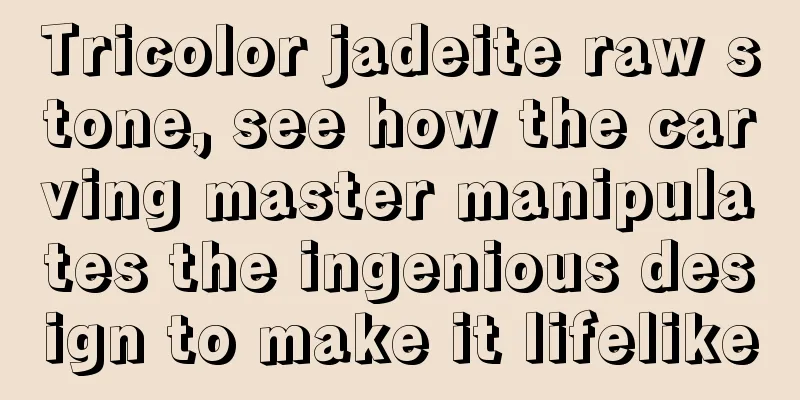How to identify jadeite: How to tell whether jadeite is real or fake?

|
Counterfeiting is common in the jade market. In addition to the most well-known B-grade and C-grade counterfeits, unscrupulous merchants have also invented a variety of jade counterfeiting methods in order to make huge profits. Today we will talk about the identification methods of common fake jade in the market. This method is much more covert than dyeing C-grade jadeite, and therefore has become a favorite trick used by unscrupulous merchants to deceive consumers. Because polishing powder is needed to polish jade, and some of the polishing powder will remain on the surface of jade after polishing. If it is purple polishing powder, it will make the jade look purple. If it is green polishing powder, it will make the jade look green, or the original green part will become darker. The biggest drawback of this method is that the polishing powder does not enter the interior of the jade, but only stays on the surface of the jade to deepen its color. Therefore, after wearing it for a period of time, the polishing powder will fall off, and the color of the jade will not be as bright as when you buy it. Therefore, the identification method of this kind of jade is to magnify and observe the cracks and gaps between particles on the surface of the jade. If you can see a dense distribution of dye, it is jade dyed with polishing powder. ; Another method is to use a cotton swab dipped in alcohol to wipe the jade. If the color falls off, it is jade that has been dyed by polishing powder. The so-called "dressing" means coating a layer of film on the surface of jade, so it is also called coated jade. This method is often used to process lighter or colorless jadeite, coating it with a layer of green film to impersonate high-end green jadeite. This kind of jade is not like C or B grade jade, which has obvious processing characteristics and is therefore highly deceptive. The simplest way to identify this kind of "dressed" jade is to rub it with your fingers, and it will feel sticky, while natural jade will still feel smooth when rubbed with your fingers. fcgc66 fcpf18 |
<<: Three tips to identify jadeite with the naked eye!
Recommend
Why do jade pendants need to be inlaid?
Jade pendants are inlaid because they are small i...
Use carving examples to illustrate what kind of jade material is suitable for carving figures
The piece of jadeite I am sharing today has a thi...
When wearing and selecting jade Buddha pendants, you must master these little tips!
Jade Buddha pendants are a very common type of ja...
Be cautious when investing and remember the “seven things not to do” with jade!
Now that people's living standards are improv...
Hey, stop, are you the one who said jade is not suitable for young people? Draw your conclusion after reading it
Jade has a long history. Over the long years, our...
Super exquisite jade inlay art, so beautiful
Jadeite is a natural mineral and a type of jade. ...
How is jadeite raw stone formed? How to tell whether jade is authentic?
Jade is a precious gemstone that originates from ...
What is a jade hand-held piece?
A hand-held piece is a jade object that can be pl...
When the finest jade meets exquisite carving, each piece is a work of art!
“Good jade needs to be carved.” Carving means car...
Is the plain jade round plaque too monotonous? The jade carver can actually create a second work like this
Due to the pressure of life and work, how long ha...
How to distinguish the authenticity of jadeite? A few simple tricks to expose fake jadeite
As people's living standards improve, jade ha...
Teach you to understand the craftsmanship of jadeite in one minute
It is said that jade is 30% material and 70% work...
The trend of high-end collectibles investment market, jewelry and jadeite account for more than one-third!
In a blink of an eye, half of 2021 has passed, an...
Jade Appreciation | Buddha observes the human world, divine bird flies high
Jade carving is a process of leaving human imprin...
If you don't know the method well, how can you keep the jade transparent and bright?
To keep jadeite transparent and lustrous is proba...









